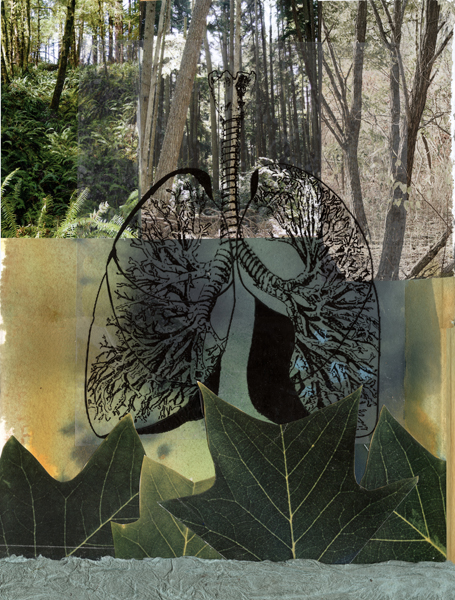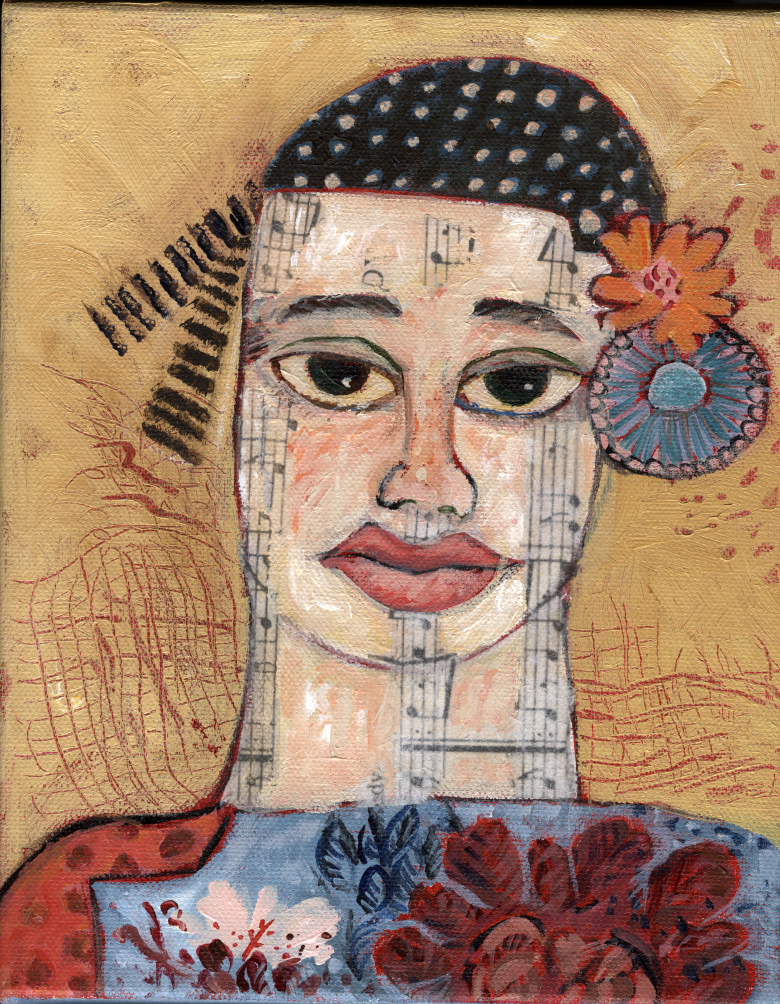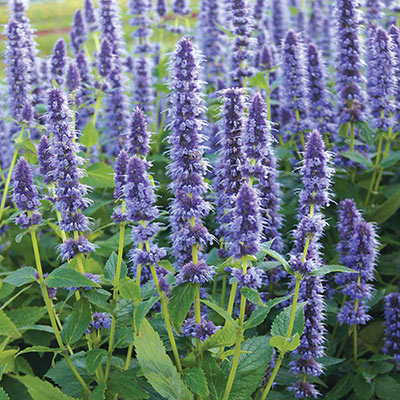Fire and Fog
It’s January 4, 2020. A deep fog envelopes our house and garden this early morning. Outdoor sounds are muffled. Tiny tree branches blur against a wet sky that closes in like a blanket. It’s the way the artist in me feels when one train of thought ends and another seems so vague on the horizon. Questions form from what I read in Loren Eiseley’s book The Unexpected Universe. I want to visualize more pieces like I did in a 2015 series of work “Earth House: Nature’s Dream & Us”. But I am conflicted because Australia is burning. The Brazilian rainforest is burning. Will the living lungs of the planet survive? Does nature in the great River of Life even have a chance under these conditions that a foggy-brained humankind has wrought?
As cooler weather comes our way I am trying to shift off garden design to designing works in the studio. I often start with something already in progress and go from there into a new series. In January and February I made 20 small “portrait”collages formed from a composite of features. They are all 5 x 7 inches. Now, a few months later, I am translating them into paint on 8 x 10 inch canvases. Making each collage took three times longer to form than I expected. Making the painting also at least three times longer than I planned. Often the painted version has a completely different expression, which I let come forth. I told my friend that I didn’t know who these women are, and without actually seeing them she suggested, “Maybe they are Everywoman.” So that is how I am seeing them for now. (It was her parting gift to me before she died. Thank you Margee Iddings.)
The bees coming to my yard are attracted to blue flowers: Agastache (hyssop family) and Leadwort (plumbago) and the chaste plant (Vitus agnus castus). Only the chaste plant has a strong scent which is kind of nice. The bees are flying right by red cardinal flowers, yellow/orange coreopsis, Echinacea (red, orange and lavender) and hot pokers both lemon yellow and orange. Why the color preference you ask? Do they have some sort of artistic preference to shape, color and scent? I’m wondering that myself. And I am also wondering why tiny native bees and wasps are not coming around to taste the nectar like they did in Virginia.

Leadwort (Ceratostigma plumbago)
Preferences of bees comes up on Google searches but I don’t know how scientific they are.
Bees cannot see red, but they can see blue and green, as well as ultraviolet light. … For example, many flowers have “ultraviolet nectar guides” on them that are invisible to humans but tell bees where to find nectar in a flower. “The patterns are like signposts telling bees where to go to find the nectar,” Dr. Dyer said. Nov 15, 2016
Flower petals have ‘blue halos’ to attract bees. Many wild bees prefer flowers in the violet-blue range—in part because these blossoms tend to produce high volumes of nectar. But it’s not easy for plants to produce blue flowers. Oct 18, 2017
Bees are attracted to a variety of bright colors, but blue, yellow and purple flowers are the most attractive to bees. … Bees do not see red — it appears black to them — so red flowers do not attract bees. Dec 6, 2018
In the meantime I’ll research more about plants that produce blue and lavender flowers so I can add them to the garden this fall or next spring. Did I mention that blue is one of my most favorite colors?
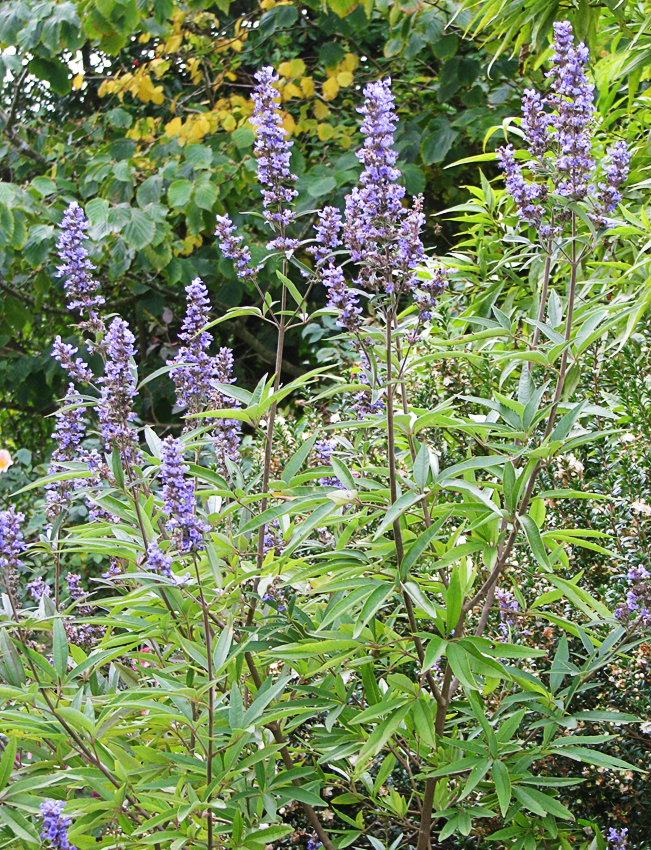
Chaste Plant (Vigex agnus castus)
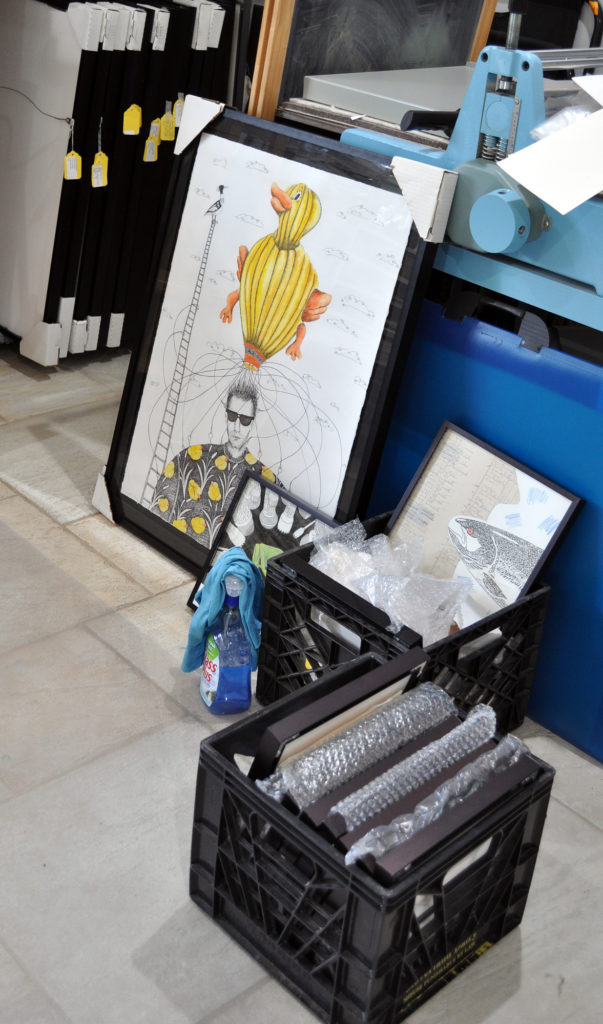
Cleaning glass and organizing pieces before an exhibit
I’m often asked, “How long does it take to make this painting (or collage or drawing)?” The answer is complicated, because each piece may take merely days or weeks. But sometimes years are spent putting together a single piece of art or a series of related pieces. And, even though a composition may come together quickly, it probably took years of study, practice and immersion in the studio before the solution to such an art piece finally filters through my brain onto the paper complete and pleasing to the eye. Finding inspiration, remembering the idea, sketching or photographing it, and mulling it over are required before a composition is arrived at.
But wait–There’s more to be done: photographing the final design so I have a digital copy. Then framing. What a process that is! Acquiring a mat, plexi or glass, plus a backing board AND getting all that squeezed into the frame takes a lot of fortitude–and unlimited frustration for me. I am not adept at cutting straight or measuring 3/16 inch components, so I’m more than willing to let the framer lay it all out on huge tables to measure and cut, to get the job done perfectly.
Another almost-final step in my art process is to get work into a gallery or other venue so that the public can see, relate to it, and like it enough to take it home. This also is a time consuming task. PR statements must be written, show labels printed out, invitations ordered and a dozen other tasks must be done. Once the calendar rolls around for installation day, more assembling is required. That is, unless the gallery owner or staff installs your work for you. Allow a day for install either way. I usually do a paper layout of the show which takes quite a bit of anxiety out of the process on what will be a strenuous install day. Better yet, try to get a floorplan from the gallery. Don’t forget to bring tools: screwdriver, hammer, display hooks, eraser, pencil, masking tape, a level, etc. A gallery with a hanging system in place can save a lot of time and keeps the walls clear of nail holes. Be prepared for the framed pieces to swing around a lot before settling in to a level position. Tape under one of the corners helps keep them straight. Placing labels and greeting people at the opening is easy compared to everything else, except……except for disassembling the exhibit three or four weeks later.
By far the easiest part of this whole art process is taking down frames off the wall. But the pace picks up while schlepping everything to the van. Again! How did we fit everything all in on the way down? How did we keep pictures from sliding around during the inevitable hard brake for a stoplight? Add more time for hauling work into studio storage. If the install/take-down all sounds too demanding, one can hire an installer to do it for you, door to door. But if you are on a tight budget, spend some time now on the treadmill and build up your upper body muscles with those weights that are somewhere in the closet!
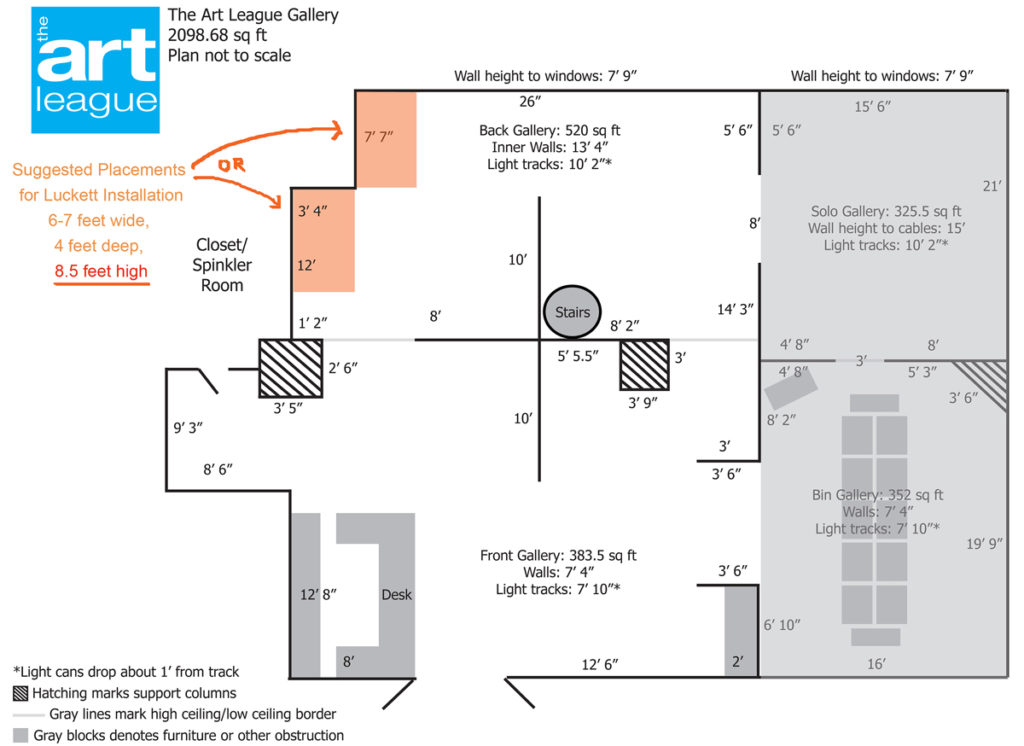

Collecting materials, tools, and ideas is the first step.
Whether an artist’s studio is neat as a pin or heaped full of brushes, tools, clay or wood, disorder characterizes the creative process. A chaotic jumble of ideas spill out of the brain and become organized in drawn or painted forms. Tubes of color sort themselves out, then are squeezed onto the palette in a jumble of mixed hues. A teapot spout, in a box of cast-offs, offers itself to the sculptor as the beginning of a bird with a long neck. A dream works its way to the conscious surface, suggesting a vision that emerges in material form from a chunk of clay.
In the process of sorting out the chaotic, disparate things are pinned down, forms take sculptural shape, layers of color illuminate the canvas, and collaged paper scraps become organized into arresting compositions. The chaos of materials and ideas gives way to sorted-out symphonies of shapes, forms, and colors. The artist, if successful, has made harmonic sense out of a world of visual discord. Chaos, interspersed with times of quietude, becomes fodder for the creative process and is instrumental in reflecting the world through the eyes of the artist.
